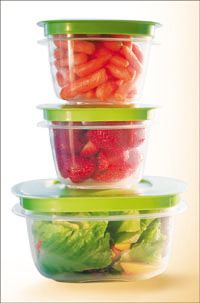Characterizing Food Packaging Materials

(Photo Credit: Jamie Grill/Getty Images)
A group of scientists from the University of Parma in Italy, has performed capillary ultrahigh-performance liquid chromatography and electrospray ionization quadrupole orbitrap high-resolution mass spectrometry (UHPLC–ESI Q-orbitrap–HRMS) to characterize materials used in food packaging and that consequently come into contact with food, namely polycarbonate food-contact plastics.1
Materials that come into contact with foods can be constructed from a wide range of materials like plastics, paper, metal, and rubber, all of which are a potential source of contamination. It is important that these materials are characterized to ensure that any risk to health is identified. Regulations are in place in many countries to ensure that food for human consumption is safe. Molecules that are searched for include non-intentionally added substances (NIAS) (chemical compounds that are present in a material but have not been added for a technical reason during production), residual monomers, degradation products, plastic additives, and organic colourants.
The authors employed capillary UHPLC–ESI Q-orbitrap–HRMS to characterize the polycarbonate that had been used as a food contact material. Targeted and untargeted analysis for data-dependent experiments were both employed after the polycarbonate samples had been reduced down to their constituent parts. The presence of common additives such as antioxidants and UV absorbers was confirmed by targeted analysis, while an untargeted approach allowed some polycarbonate degradation products and the organic dyes used for the colouration of plastic materials intended to come into contact with food to be identified. This was the first time that the organic colour dyes of a food plastic material were identified.
The authors concluded that this technique has potential in the field of material characterization for food safety assessment. - K.M.
Reference
1. C. Bignardi, A. Cavazza, C. Corradini, and P. Salvadeo, Journal of Chromatography A 1372, 133–144 (2014).

Analysis of PFAS in Milk by LC-MS/MS
May 15th 2025Dairy milk is one commodity that can be impacted by environmental contaminants, such as PFAS, so it is important to implement extensive, robust, and accurate testing. In this work, a sensitive and reliable method was developed for the analysis of PFAS in milk by LC-MS/MS at levels as low as 0.01 µg/kg.

.png&w=3840&q=75)

.png&w=3840&q=75)



.png&w=3840&q=75)



.png&w=3840&q=75)











